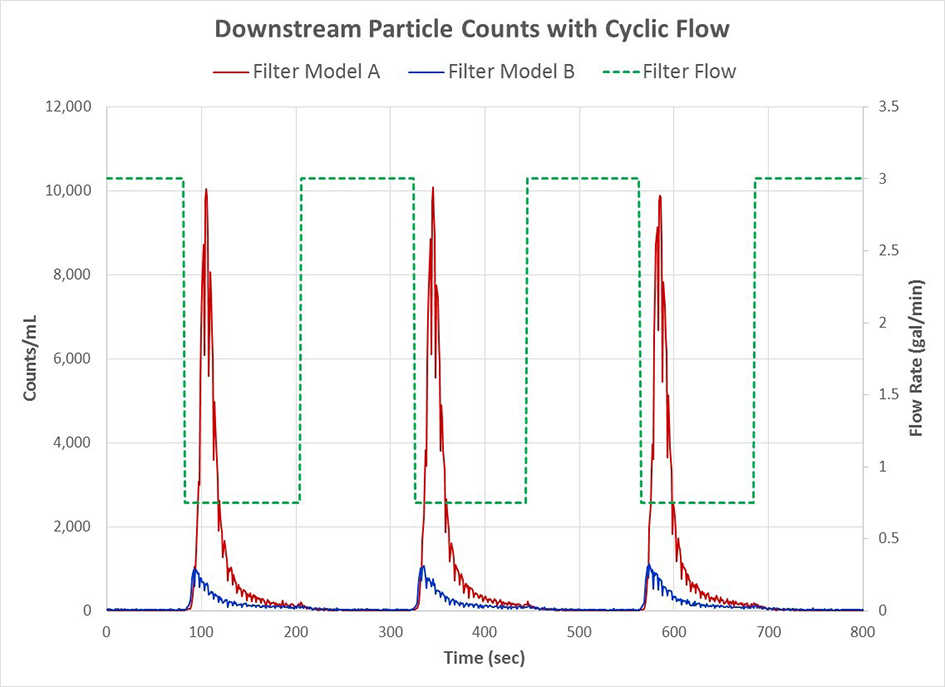Background
Fuel and oil filters used to remove particulates from liquids are evaluated by OEM’s and filter manufacturers using standardized test protocols that specify simplified conditions that aid in laboratory repeatability and reproducibility. While this yields a test that simplifies laboratory requirements, the filter is evaluated with conditions that are far from the vehicle and machinery applications where the filters are most often used, and these test results do not always correlate with actual filter performance in application. By introducing dynamic inputs such as flow rate fluctuation and structural vibration, we are trying to develop test protocols that evaluate filters under conditions that more accurately simulate those seen in application. These dynamic inputs also provide new performance criteria to differentiate filters that have near identical results with traditional steady condition measurements.
Approach
The overall objective of this program was to create a complete filter efficiency test standard that applies to heavy duty diesel applications. Diesel OEMs and filter manufacturers were consulted to quantify the system operating parameters including vibration environment and filter flow conditions. Next, structural dynamic models of the filter and mounting structure were built and verified using an instrumented filter and vibration sweep testing. Thirdly, filter efficiency with vibration and cyclic flow inputs were evaluated empirically using a modified filter test stand with inline particle counters upstream and downstream of the test filter, a shaker table, and flow changing valves. Finally, a test procedure was created, and multiple filter models from different manufacturers were evaluated with the protocol in a benchmark evaluation.
Accomplishments
Several parameters that are critical to filter efficiency performance were identified and implemented in the final test protocol. Among these parameters include the filter and mounting structure resonances within the frequency range of the vibration input, the rate and amplitude of flow change through the filter, the capacity of dust collected on the filter prior to vibration or cyclic flow input, and the time characteristics of the particle shedding events that can be initiated by cyclic flow. The benchmarking evaluation showed that filter models that have indistinguishable efficiency with the traditional test methods can perform very differently under the dynamic inputs of the developed standard. The test standard yielded consistent results for a given filter model and shows to be useful for filter model selection as well as filter development or evaluating production consistency.

Figure 1: Competitive filters that have indistinguishable filter performance under steady flow demonstrate very different performance under cyclic flow in the SwRI developed test standard.

